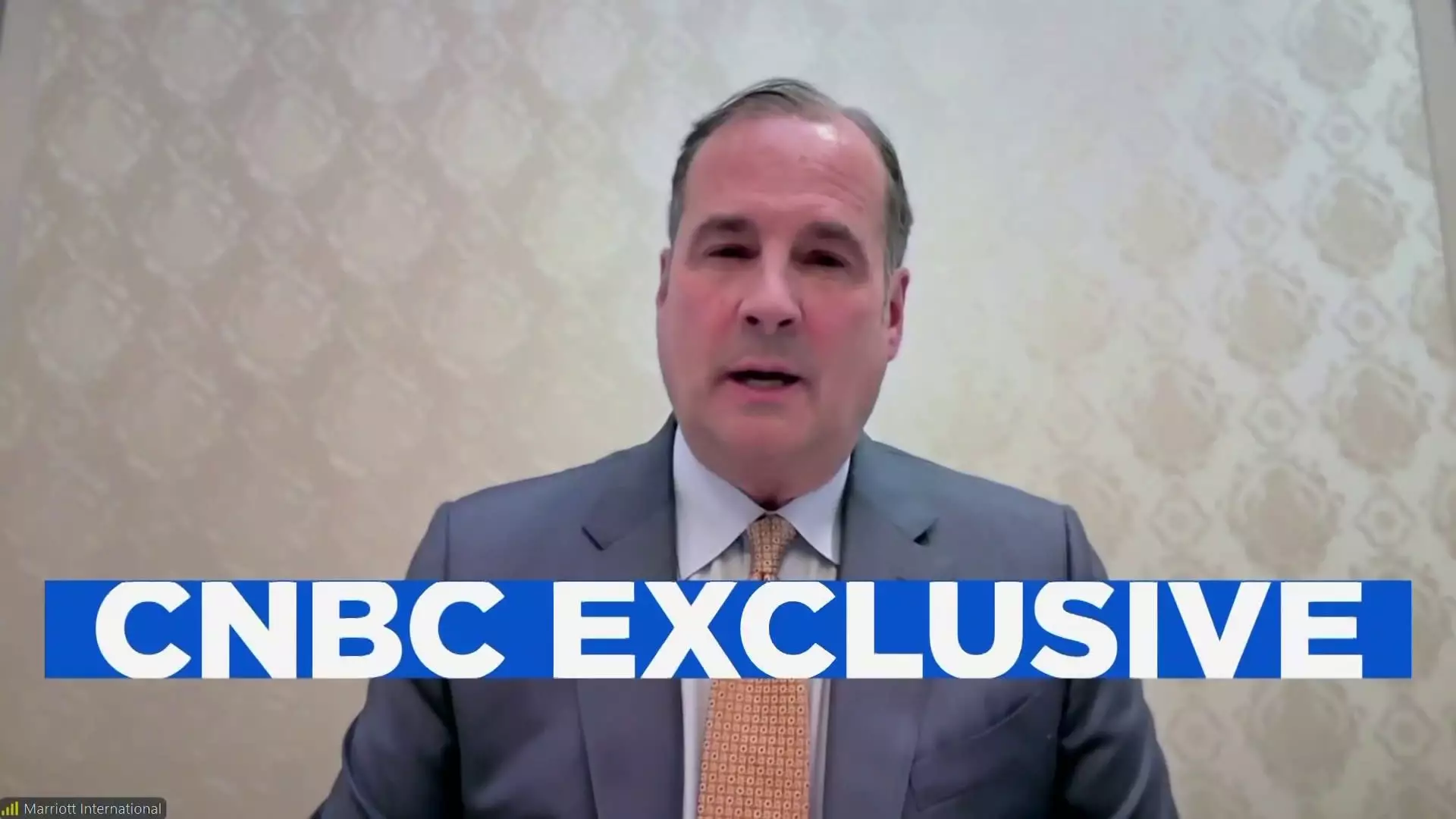In a recent discussion with CNBC, Anthony Capuano, the CEO of Marriott International, provided an overview of the company’s robust operational performance amidst significant corporate upheaval. The hospitality giant announced the painful decision to lay off over 800 corporate employees, coinciding with a sluggish tourism recovery in one of its most significant markets, China. Despite these challenges, Capuano emphasized the company’s steady performance, stating the business is „firing on all cylinders across every geography.“ Marriott’s third-quarter earnings reflected a 3% global increase in revenue per available room (RevPAR), even though China experienced an 8% decline, highlighting the varying dynamics influencing the hospitality industry.
The mixed performance in China raises questions about the long-term outlook for Marriott in this crucial market. Capuano remains optimistic, highlighting a record number of hotel agreements signed in early 2024, stating, “We signed more deals in the first half of 2024 than in any six-month period in our history in China.” This assertion introduces a narrative of a resilient and adaptive company ready to capitalize on future opportunities in a recovering tourism sector.
Marriott’s performance indicates promising trends in domestic tourism within China, with Capuano noting a gradual recovery in this sector. The CEO also reported that inbound travel has surpassed pre-pandemic levels, suggesting a notable shift in international travel behaviors. In the third quarter, cross-border travel constituted over 20% of total room nights—a marked increase from the pre-pandemic range of 18 to 19%. The expectation of airline seat capacity restoration further adds to the projections of growth in inbound tourism, indicating that Marriott is positioning itself strategically to benefit from this potential resurgence.
Outside of China, Marriott has been witnessing healthy growth in net room availability, reporting a 6% year-on-year increase and a 2.5% rise in room rates, predominantly driven by a resurgence in group travel—a segment Capuano has dubbed the „bright, shining star“ of the company’s recovery. Furthermore, the addition of 9 million new Bonvoy members in the last quarter raises questions about customer engagement and loyalty initiatives amid these shifts.
Amidst the positive indicators, Marriott’s decision to implement layoffs signals a strategic repositioning toward a more efficient operational framework. This realignment aims to reduce annual costs by an estimated $80 to $90 million, beginning in 2025. Capuano clarified the layoffs are not merely a traditional cost-cutting measure but part of an essential reorganization aimed at enhancing the company’s agility and market responsiveness. This involves decentralizing decision-making processes, allowing for a more localized and informed approach to operations in the increasingly diverse markets in which Marriott operates.
Capuano insists that these changes, primarily affecting corporate-level positions rather than hotel operations, will not compromise the service experience at Marriott properties. Instead, these restructured layers are purported to foster a faster and more adaptive responding mechanism to market demands, directly benefiting guest experiences.
Future Outlook and Market Positioning
Looking ahead, Marriott International’s proactive measures underscore a commitment to maintaining a competitive edge. Capuano’s insights reveal an unwavering belief in the potential of the travel and tourism market, particularly in recovering areas like Asia-Pacific. Japan, celebrating the opening of Marriott’s 100th hotel, illustrates the regional growth strategy in action.
The strategic initiatives and positive indicators from Capuano illustrate a company navigating through present challenges while positioning itself for future growth. As Marriott International maneuvers through these pivotal shifts, its ability to adapt and leverage market dynamics will be crucial in sustaining its growth trajectory and enhancing its market presence globally.
While the current landscape poses challenges, Marriott’s strategic foresight, reinforced by positive growth indicators and a focus on operational efficiency, signals an optimistic outlook for the future of the hotel giant.


Napsat komentář